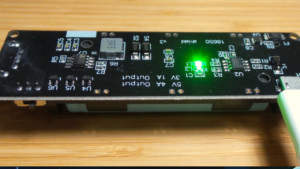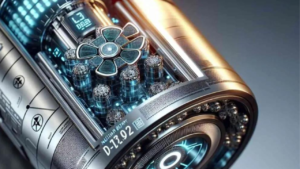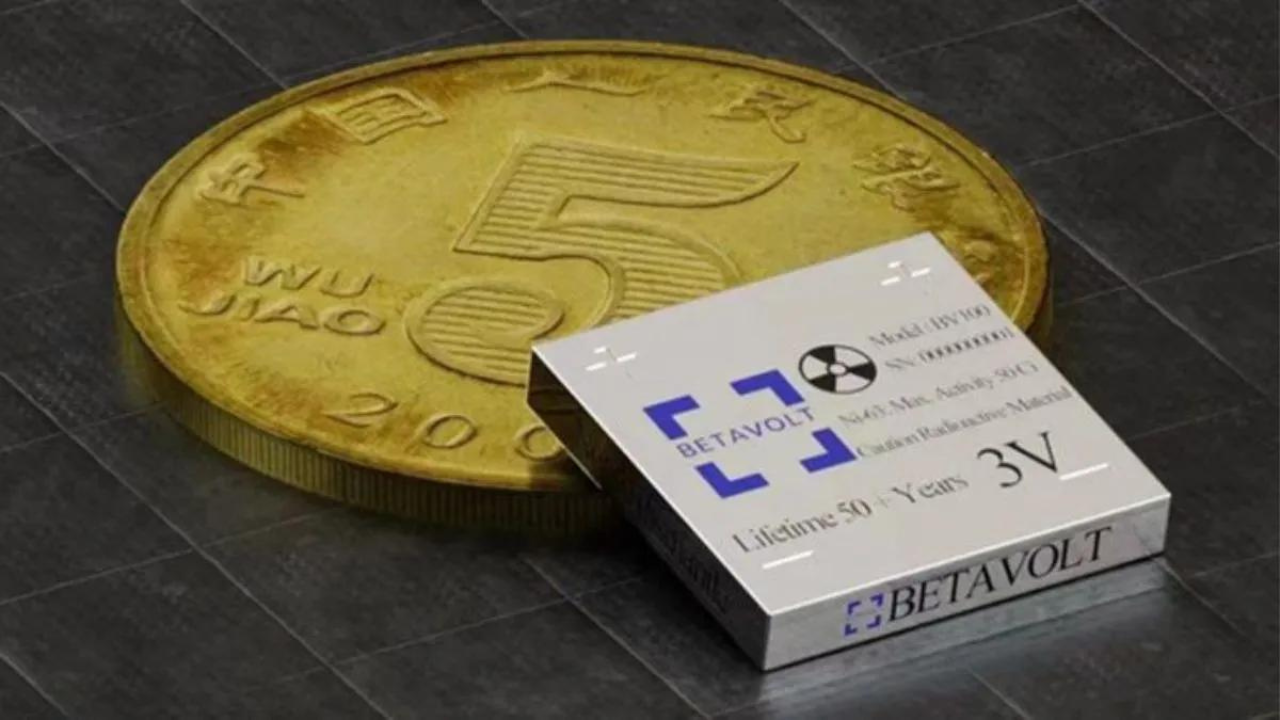- Betavolt unveils nuclear battery: 50-year lifespan, no recharging
- World’s smallest design: 15x15x15 mm, 63 isotopes
- Generates 100 microwatts at 3 volts, targets 1 watt by 2025
- Versatile applications: aerospace, AI, medical devices
- Radiation-safe: Suitable for pacemakers, emits harmless radioactivity
- Mechanism: Isotopes undergo radioactive decay, converted to electricity
- Resilient: Functions from -60 to 120 degrees Celsius
- Future outlook: Commercial production imminent, potential game-changer in power solutions.
1. Unveiling the Innovation
In terms of scientific developments, Betavolt, a pioneering Chinese business, has introduced a groundbreaking nuclear battery with an unprecedented 50-year lifespan that eliminates the need for repeated charging.
2. A Game-Changing Design.
Betavolt’s breakthrough is the world’s smallest nuclear-powered battery, measuring only 15 x 15 x 15 mm and made up of 63 meticulously constructed isotopes. This tiny design represents a paradigm shift in the field of energy storage systems.
3: Power without boundaries.
Rechargeable batteries have traditionally been tied to chargers, but Betavolt’s invention opens up new possibilities. With continued studies, Betavolt anticipates widespread production, indicating a future in which batteries can power electronics continually for half a century.

4. Dimensions and Output
The battery is tiny but powerful, containing radioactive isotopes organised in thin layers. Despite its small size, it produces 100 microwatts of electricity at three volts. Betavolt intends to increase capacity to 1 watt by 2025, paving the way for more advanced applications.
5: Versatile applications
Betavolt’s nuclear battery overcomes traditional constraints. The applications range from aerospace and artificial intelligence to medical equipment, microprocessors, smart sensors, small drones, and micro-robots, and they are both diverse and transformative.
6: Safety and Medical Integration.
In response to radiation worries, Betavolt promises that its nuclear battery emits radioactivity in a safe manner. This innovative characteristic establishes the battery as a reliable power source for important applications, such as pacemakers.
7. Unravelling the Mechanism
At the heart of Betavolt’s nuclear battery is an intriguing process. The radioactive decay of the isotopes within the battery releases energy, which is efficiently turned into electricity. Betavolt assures safety by strategically stacking isotopes in separate layers, which reduces the chance of fire.

8: Resilience under Extreme Conditions
Betavolt’s nuclear battery is not only powerful, but also robust. This innovation can operate flawlessly in temperatures ranging from minus 60 degrees to 120 degrees Celsius, making it ready to fulfil the demands of a wide range of situations.
9. Anticipating the Future
As Betavolt progresses through the testing phases, the anticipation for the commercial availability of their nuclear battery grows. The ability to transform sectors and rethink our reliance on charging devices ushers in a new era of power solutions.
Finally, Betavolt’s nuclear battery emerges as a symbol of innovation, pointing to a future energy environment free of the constraints of regular charging. The possible applications, safety features, and resilience demonstrated by this idea lead to a future in which technology effortlessly blends into our lives, powered by a source that lasts generations. As Betavolt approaches mass manufacturing, the transformative impact of their nuclear battery on how we harness and use power is set to be nothing short of spectacular.

